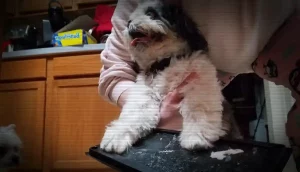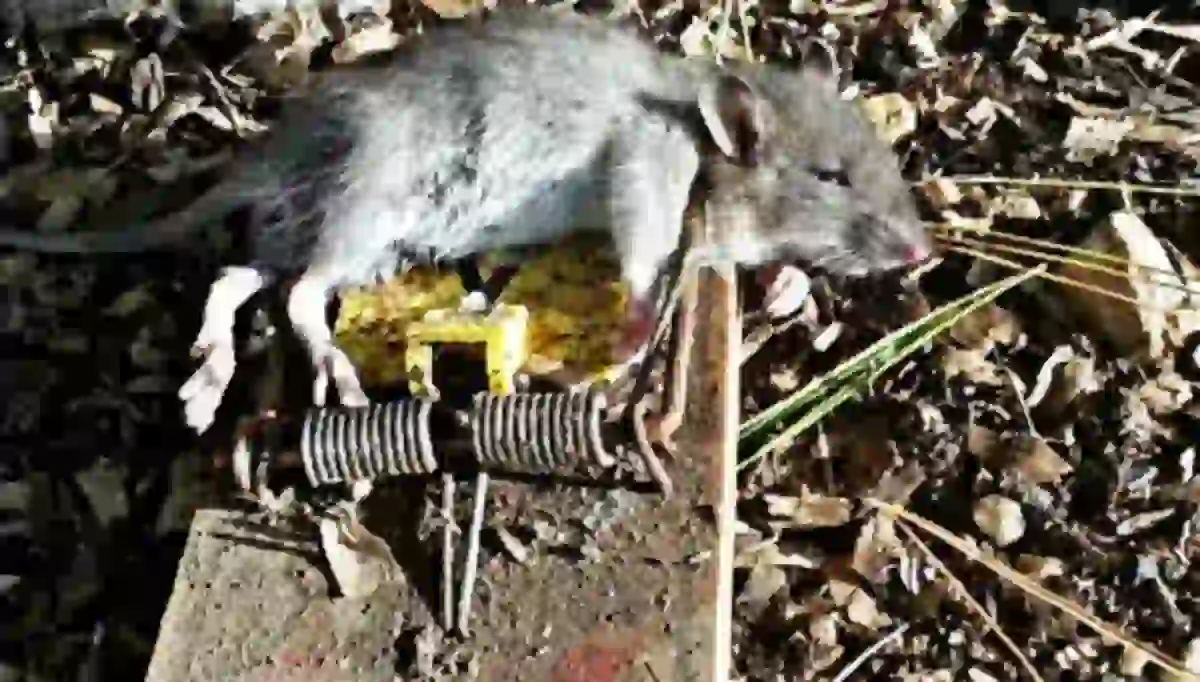Glue traps are pest control tools designed to ensnare rodents or insects such as cockroaches using strong adhesives. Although they may be effective in capturing these pests, there is a risk of accidentally trapping a curious dog. Fortunately, you can remove glue trap from dog if yours becomes trapped by dissolving the glue. If your dog sustains any injuries from the trap or if you encounter difficulties in removing it gently, contact your veterinarian for assistance.
How to remove glue trap from dog

Follow these safe steps to remove glue trap from a dog:
1. Gather your supplies
The supplies you need include:
- a thick towel
- a pair of gloves
- a secure box or container with oxygen holes to place your dog
- a bottle of rapeseed or other cooking oil like vegetable oil. You can use baby oil but it’s not as effective)
Various vegetable-based cooking oils like canola oil, corn oil, or peanut oil are the best options to use to remove glue trap from dogs. You need to act fast to prevent the dog from potentially eating the glue in an attempt to free itself, which could be poisonous due to possible active agents in it.
2. Protect yourself from possible agitation
Wear gloves to protect yourself and the animal from any potential harm. Restrain the dog near its head. Place the towel close to the dog’s head without covering it completely and maintain a firm, gentle grip to prevent any sudden movements.
3. Massage the oil into your dog’s fur
Use your free hand to massage warmed oil gently into the dog’s fur or skin where it is in contact with the adhesive surface. It can take some time for the oil to soften the glue, so continue massaging until the dog is free from the sticky board.
Make sure you warm the oil slightly by placing the bottle under running hot water. Before applying the oil to your pet, test its temperature on your wrist. It should feel warm but not hot. In the absence of cooking oil, alternatives such as butter, lard, or peanut butter can also be used to remove glue trap from dog.
4. Give the dog a warm bath
Begin by gently bathing your pet in lukewarm water and using a mild liquid soap to work through her fur with care. Rinse her thoroughly and dry her with a towel before leaving her alone.
Should you observe any injuries resulting from the glue trap, reach out to your veterinarian for assistance. Remember to wash your hands thoroughly to eliminate any traces of the glue that might have adhered to your fingers.
5. Leave the dog to dry and rest
Avoid the temptation of frequently checking on your dog. Moreover, it’s only natural for the dog to feel anxious. A recovering dog needs a calm and quiet environment with minimal disturbance and interference. So, give him space and time to recover.
Don’t use strong solvents
Although some glue trap manufacturers suggest the use of mineral spirits or paint thinner to dissolve the glue, these chemicals can be excessively harsh for your pet. They have the potential to cause skin irritation, and the fumes emitted from such potent chemicals can be harmful.
Don’t also use alcohol-based products such as nail polish remover or petroleum-based substances such as petroleum jelly, motor oil, or lubricating grease to attempt to free your pet from the trap.
Tips to prevent dogs from getting in the glue trap again
There are limited situations where glue traps may seem suitable, nevertheless, they are generally not recommended for use in efficient pest control. Glue traps typically work without discrimination, often resulting in significant distress for the target or non-target animal or insect captured.
a. Don’t consider glue traps in the first place
Avoid using sticky trap if you have alternative options available. If you find it necessary to use sticky traps, make sure to place them in hard-to-reach areas inaccessible to your pets. If you arw dealing with mice infestation, for example, instead of buying sticky mouse traps, consider pet-safe alternatives.
b. Be cautious if using a glue trap
Remember that dogs are known for their curiosity, except they get calmer and less curious as they age. So, exercise extra caution when using glue traps in a household with a dog. You also want to regularly check the traps to reduce the suffering of any animal that may accidentally get stuck.
Final thoughts
If you can’t remove glue trap from dog yourself, promptly transport the animal to a veterinarian. A dog affected by oil requires immediate treatment, as it affects its ability to regulate body temperature effectively. If no local option is available for professional treatment, keep your dog in a warm, dark, quiet, and secure place until it has sufficiently recovered.
Read also: how to rescue a live mouse on glue trap
Source
- “Calmer and less curious: How dogs’ personalities change as they age.” Yahoo News






